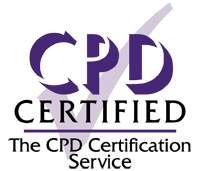Comparison of surgical options for basic intermittent exotropia
This study compared the outcomes of three surgical options from one surgeon, to treat basic intermittent exotropia. Surgeries included bilateral lateral rectus recession (BLR), unilateral lateral / medial rectus recession / resection (RR), and unilateral lateral rectus recession and medial...
Long-term outcomes of using intraoperative relaxed muscle positioning technique in thyroid eye disease
The authors present a retrospective case review of consecutive patients undergoing ocular muscle surgery by one ophthalmologist using the intraoperative relaxed muscle positioning (IRMP) technique for thyroid eye disease (TED)-associated strabismus over a 23-year period. The following data were extracted...
Macular choroidal changes after inferior oblique muscle surgery
This study was undertaken to investigate the retinal neurovasculature, choroidal thickness and choroidal vascular index (CVI) changes at the macula at one week, one- and three-month intervals post inferior oblique muscle myectomy. The hypothesis was that, given the close proximity...
BT vs primary surgery for infantile esotropia
In this study, the success rate of treatment for infantile esotropia (IET) patients who had surgery because of under correction after botulinum toxin (BT) is compared to those having primary surgery. The study included 52 patients (27 male) with mean...
Differences in strabismus surgery outcomes in preterm vs full-time birth infants
This study aimed to analyse motor and sensory outcomes of strabismus surgery in 70 preterm (group 1) and 242 full-term (group 2) infants. Group 1 mean gestational age and birth weight were 31.25 ±2.51 weeks and 1562.70 ±412.82g. Pre and...
Barriers to diagnosis and management of VKC
The authors investigate the lived experience of vernal keratoconjunctivitis (VKC) diagnosis and treatment in US patients, reported by their carers and eyecare clinicians, and to identify barriers to the timely diagnosis and management of this condition. The study included seven...
Sensory and motor function changes after surgery for epiblepharon
In this study the authors investigate the effect of epiblepharon (EB) correction on motor and sensory function in children with EB and comorbid strabismus. Ninety eyes of 45 children were evaluated: mean age 6.8 ±2.9 years, 18 males, 27 females,...
Re-evaluation of virtual reality visual field testing
This study evaluated an updated testing algorithm to determine its dynamic range, and to assess if this produced a suitable central hill of vision, and to evaluate test-retest reproducibility in healthy children. This was a prospective study of children with...
Vigabatrin-induced retinal toxicity detected by 30Hz ERG
The purpose of this study was to assess the role of 30Hz flicker electroretinogram (ERG) as a marker for measuring changes in visual function over time in children receiving vigabatrin. This was an observational study of 11 children with mean...
Description of surgical modification for heavy eye syndrome
For heavy eye syndrome, these authors report a modification to facilitate approximation of the widely separated muscles using a combination of zip-up and hand-over-hand manoeuvres. Ten patients underwent this surgery with unification of the superior rectus and lateral rectus muscles....
Myopia progression with atropine and different treatment lenses
This study aimed to determine the effectiveness of low dose atropine at inhibiting myopia progression, the possible additive potency of this treatment combined with either of two peripheral defocus contact lenses over three years of therapy, and whether there was...
Medial rectus inferior half plication surgery for near exotropia
In this study the authors report a relatively new surgical treatment for near exotropia. The study included 17 patients: four with previous surgery and all with medial rectus injection of bupivacaine to reduce the angle of deviation. Treatment involved inferior...








